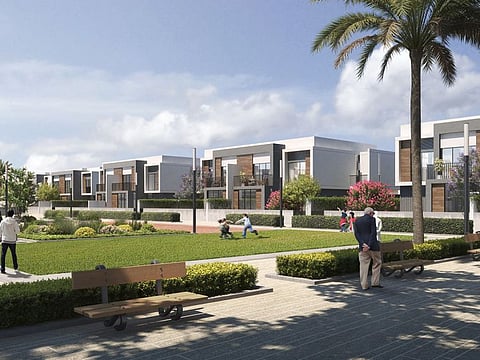Dubai South real estate surges as Al Maktoum Airport expansion fuels demand
DWC airport expansion drives up property sales, rents, and investor interest

Dubai: A new real estate hotspot is fast emerging in Dubai — and it's being powered by jets. With the massive Dh128 billion expansion of Al Maktoum International Airport (DWC) now underway, Dubai South is quickly becoming the city’s next big growth story.
While the revamped airport set to be the largest in the world, handling up to 260 million passengers a year, it’s not just a leap for aviation — the ripple effects are already visible across Dubai South’s real estate market.
Prices affordable – for now
Homebuyers and investors are flocking to the area, drawn by property prices that remain nearly 60% lower than in prime areas like Downtown or Business Bay. The average sale price in nearby communities like Dubai Industrial City is currently Dh750 per square foot, while Dubai Investment Park averages Dh850.
In contrast, prime zones still command Dh2,000–2,500 per square foot. That pricing gap is attracting both end-users and investors hunting for value and long-term growth potential.
Property sales are soaring
In 2024 alone, Dubai South saw Dh16.1 billion in property sales. Just five months into 2025, that figure has already crossed Dh15 billion — a clear sign of ongoing momentum, according to a new market report from Betterhomes.
Rental demand is rising just as fast. Average annual rents have jumped 20% in 2025, with tenant demand up sharply. In fact, buyer and rental inquiries have been climbing by over 20% month-on-month, according to the report, which attributes the surge to growing interest in both ready and off-plan properties.
Infrastructure, a game-changer
Upcoming connectivity projects like the Dubai Metro Blue Line, which will serve Al Maktoum Airport, and the Etihad Rail, which will include a station in Dubai South, are expected to boost the area’s appeal even further. With transport access expanding, the area is becoming more livable — and more investable.
Further evidence of momentum came with a recent Dh1 billion contract to develop the airport’s second runway, signaling that timelines are moving forward at pace.
Investors are betting big
Large-scale investments are adding to the excitement. A $1 billion real estate partnership between a UAE-based asset manager and global investment giant Brookfield is injecting fresh institutional capital into the residential sector, not just in Dubai but across the region.
Betterhomes notes that this kind of institutional confidence often marks the early stages of a broader growth cycle. They expect Dubai South to follow a similar trajectory to what was seen after the launch of Terminal 3 at Dubai International Airport in 2005, when surrounding areas like Dubai Marina and Al Barsha saw property values nearly double by 2008.
Outlook: More room to grow
Looking ahead, prices in Dubai South are forecast to climb another 15% to 20% in the near term. With construction progressing, infrastructure rolling out, and prices still relatively accessible, the window of opportunity remains open — but likely not for long.
For UAE residents seeking a home or investment with strong upside potential, Dubai South could very well be the next place to land.
Sign up for the Daily Briefing
Get the latest news and updates straight to your inbox



